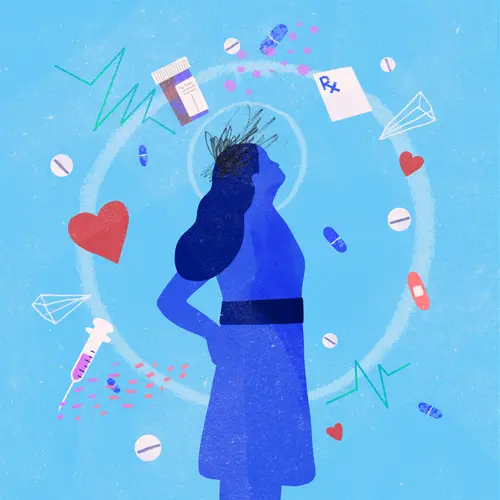Primary biliary cholangitis is a disease that damages the bile ducts in your liver. Your doctor may also call it PBC. It used to be called primary biliary cirrhosis.
These ducts have an important job. They carry a fluid called bile, which plays a key role in digestion, away from your liver. Bile is what helps your body absorb fats, cholesterol, and even some vitamins. It also helps get rid of worn-out red blood cells and other things your body doesn't need.
When bile ducts don’t work the way they should, those substances stay in your liver. The bile backs up, and your liver gets inflamed and maybe even scarred. Over time, the scar tissue replaces healthy liver tissue, and the organ doesn’t work the way it should.
This is usually a slow and gradual process. Your liver does OK for a while. And you’ll take medications to help it work better and manage your symptoms. But the disease can worsen over a few months or many years. One day, you may need a liver transplant.
What Causes It?
Doctors aren't totally sure. It isn’t passed down from parents to children, but there does seem to be a family link. It’s more common if you have a parent, brother, or sister who has it. Most people who get it are women, and most are in their 40s and 50s.
The disease may be linked to immune system problems like thyroid trouble, pernicious anemia, or scleroderma. Things from outside your body -- smoking, chemicals, or infections -- can also trigger the disease.
What Are the Symptoms?
Early on, you might not notice any at all. You can live for many years without problems. Later, you might feel tired or have itchy skin or dry eyes and mouth.
As the disease gets worse, you might notice:
- Yellow skin and eyes (jaundice)
- Swollen feet and ankles
- Pain and swelling in your abdomen
- Bone, muscle, or joint pain
- Darkened skin
How Is It Diagnosed?
If you have any of these symptoms, your doctor might suggest blood tests. They’ll tell them how well your liver works and if you have any immune system issues. They may also want you to have imaging tests like an ultrasound, CT scan, MRI, or endoscopy (ERCP). These provide a more detailed look at your liver and the area around it. They may also suggest a liver biopsy. They’ll remove a small piece of liver tissue and examine it in the lab to look for damage or disease.
How Is It Treated?
There's no cure, but medications can slow the disease. The most common drug is ursodiol (ursodeoxycholic acid), which helps move bile through your liver. There are also newer drugs to treat symptoms like itching and fatigue.
Other treatments
If UDCA doesn't work for you or isn't effective for you anymore, your doctor can change your treatment or add one of these treatments:
Fenofibrate (Tricor). This is a type of medication known as a fibrate. Your doctor may prescribe it on an off-label basis to help ease liver inflammation and itching. You take it alongside your regular dose of UDCA. Researchers are still studying how well it works to slow PBC progression and liver-related complications.
Elafibranor (Iqirvo). This drug belongs to the PPAR agonist group of medications. It eases liver inflammation, cuts down on how much bile your liver makes, and helps your liver flush out built-up bile acid.
Seladelpar (Livdelzi). This is another PPAR medication. It helps lower levels of the enzyme alkaline phosphatase (ALP) in your blood. High levels of this enzyme are linked to the progression of PBC. This drug also helps your liver make less bile. If your PBC hasn't gotten better on UDCA alone, it may help with symptoms of itching.
Another drug, obeticholic acid (Ocaliva), was previously approved on an accelerated basis for use by people who didn't get help from UDCA or who couldn't take it. People were allowed to take it while studies were still taking place. During that time, researchers found that some people who had PBC and advanced cirrhosis developed liver failure. Others who had PBC but not cirrhosis had serious liver damage. In September 2025, the manufacturer of Ocaliva withdrew the medication from the market and stopped all studies on it.
Your doctor may suggest you make some changes in your daily life. If you drink alcohol, stop. It puts a strain on your liver. Choose low-sodium foods and exercise regularly to ease your symptoms.
When medications no longer help, a liver transplant may be an option.


